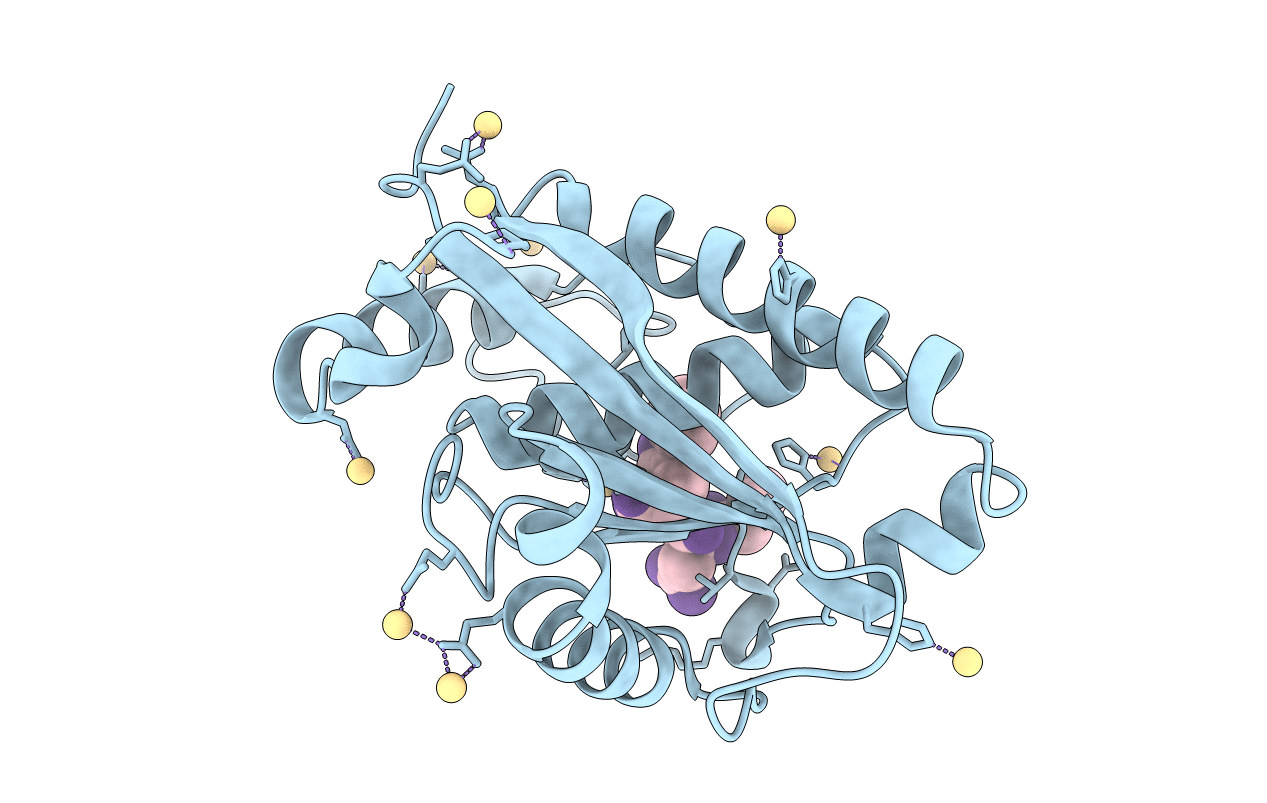
Deposition Date
2002-01-22
Release Date
2002-07-10
Last Version Date
2024-10-16
Entry Detail
PDB ID:
1KUG
Keywords:
Title:
Crystal Structure of a Taiwan Habu Venom Metalloproteinase complexed with its endogenous inhibitor pENW
Biological Source:
Source Organism:
Protobothrops mucrosquamatus (Taxon ID: 103944)
Method Details:
Experimental Method:
Resolution:
1.37 Å
R-Value Free:
0.20
R-Value Work:
0.17
Space Group:
P 41 21 2


